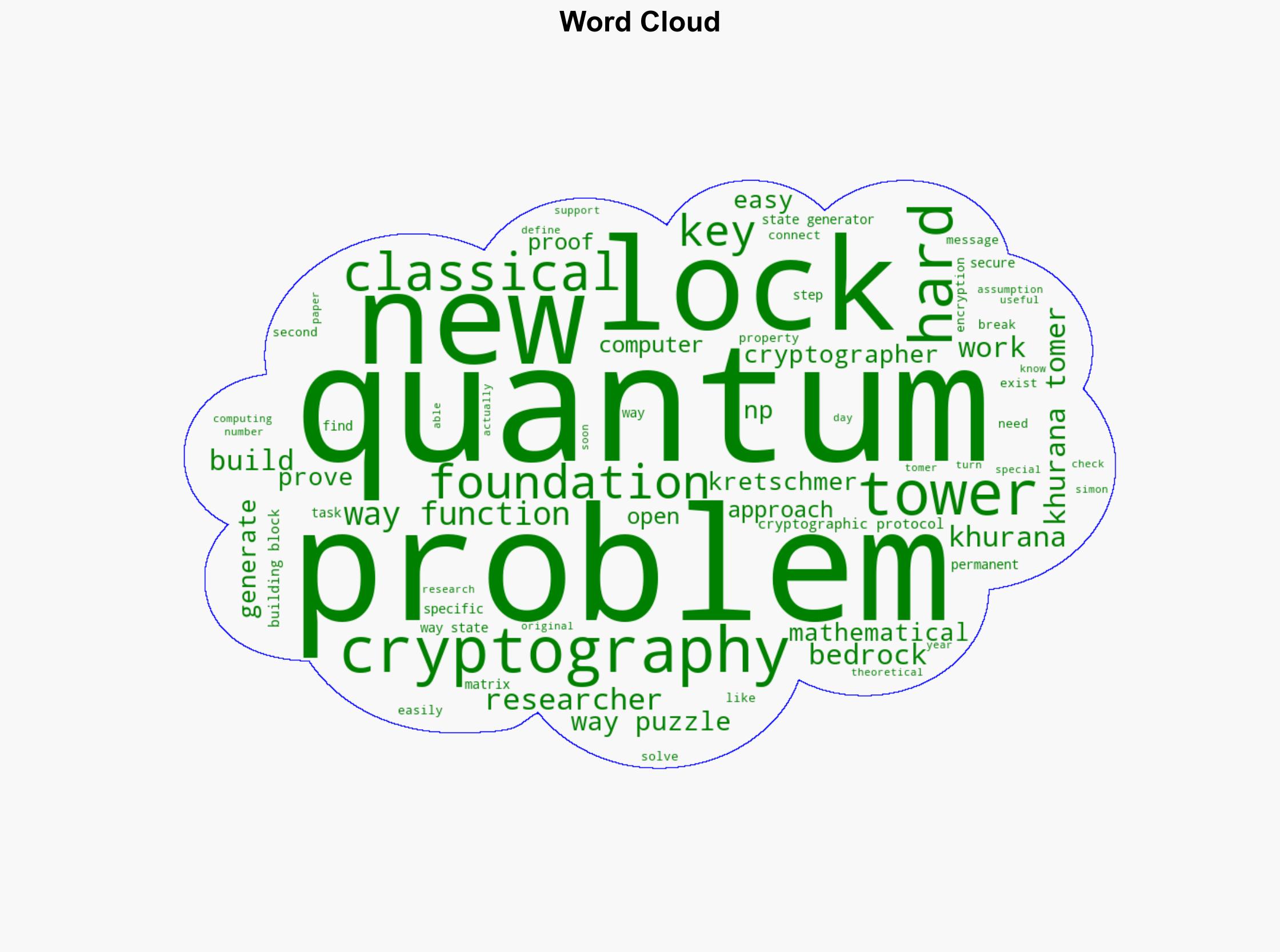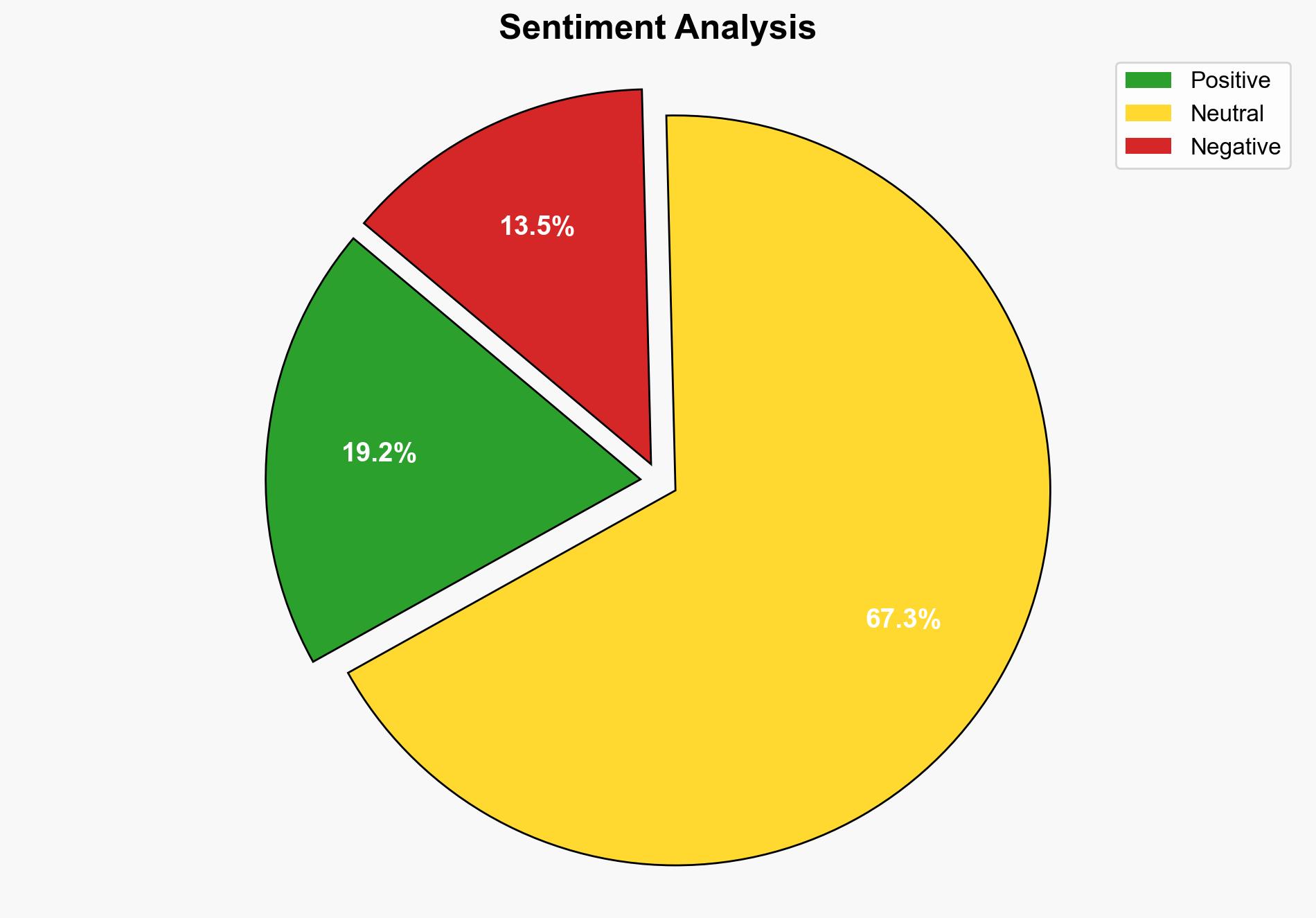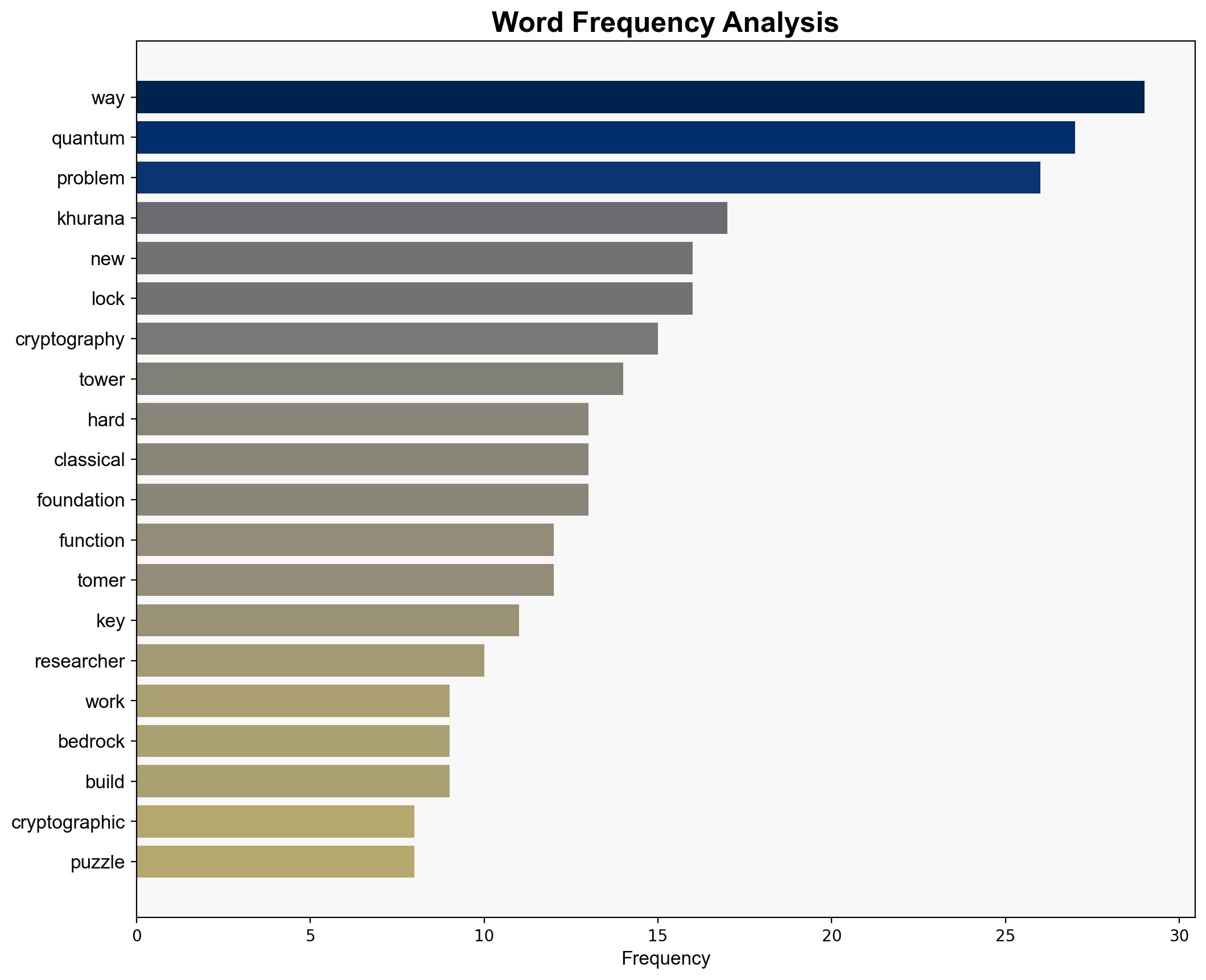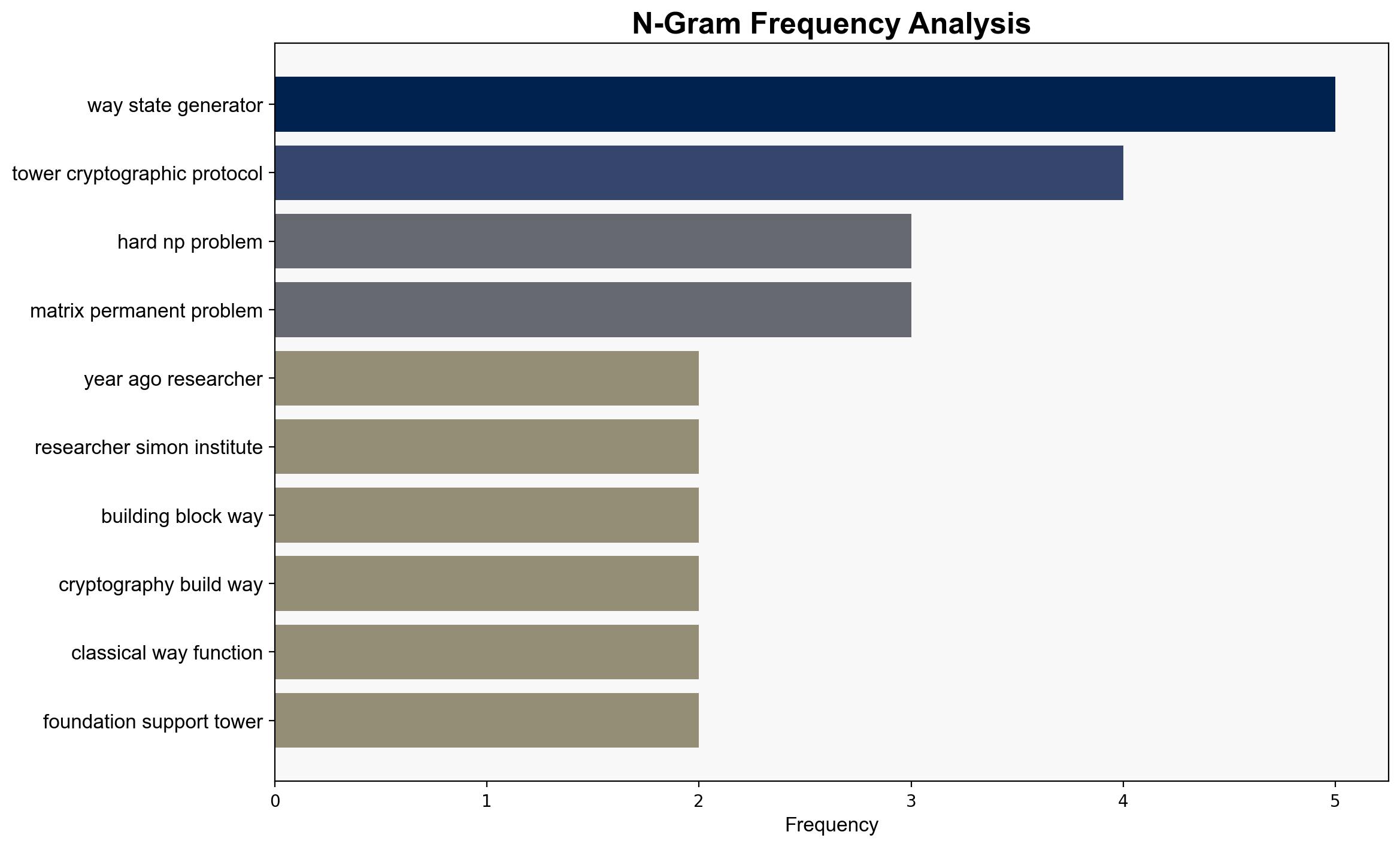The New Math of Quantum Cryptography – Wired
Published on: 2025-09-07
Intelligence Report: The New Math of Quantum Cryptography – Wired
1. BLUF (Bottom Line Up Front)
Quantum cryptography is poised to revolutionize encryption by leveraging quantum physics to solve classical cryptographic challenges. The most supported hypothesis suggests that quantum cryptography can provide a more robust foundation than traditional methods, though practical implementation remains uncertain. Confidence level: Moderate. Recommended action: Monitor developments in quantum cryptography and assess potential integration into existing cybersecurity frameworks.
2. Competing Hypotheses
Hypothesis 1: Quantum cryptography will successfully replace traditional cryptographic methods, offering enhanced security through its reliance on quantum physics, which inherently provides stronger protection against potential vulnerabilities.
Hypothesis 2: Quantum cryptography, while theoretically promising, will face significant practical and theoretical challenges that prevent it from fully replacing traditional methods in the near term, maintaining classical cryptography’s dominance.
Using the Analysis of Competing Hypotheses (ACH) 2.0, Hypothesis 1 is better supported due to the theoretical advancements and potential of quantum cryptography to address known vulnerabilities in classical systems. However, Hypothesis 2 cannot be dismissed due to the current lack of practical implementation and reliance on hypothetical constructs like oracles.
3. Key Assumptions and Red Flags
Assumptions:
– Quantum cryptography can be practically implemented beyond theoretical models.
– Classical cryptographic vulnerabilities are insurmountable without quantum solutions.
Red Flags:
– Overreliance on theoretical constructs (e.g., oracles) that may not translate to real-world applications.
– Lack of empirical evidence supporting the scalability and reliability of quantum cryptographic systems.
4. Implications and Strategic Risks
The transition to quantum cryptography could disrupt current cybersecurity paradigms, potentially rendering existing encryption methods obsolete. This shift could lead to a cybersecurity arms race, with significant economic and geopolitical implications. Failure to adapt could expose critical infrastructure to new vulnerabilities, while successful integration could enhance national security and protect sensitive information.
5. Recommendations and Outlook
- Invest in research and development to bridge the gap between theoretical quantum cryptography and practical application.
- Develop contingency plans for the potential obsolescence of classical cryptographic methods.
- Scenario-based projections:
- Best: Quantum cryptography is seamlessly integrated, enhancing global cybersecurity.
- Worst: Quantum cryptography remains theoretical, and classical systems are compromised.
- Most Likely: Gradual integration with hybrid systems leveraging both quantum and classical methods.
6. Key Individuals and Entities
William Kretschmer, Dakshita Khurana, Kabir Tomer, Mark Zhandry
7. Thematic Tags
national security threats, cybersecurity, quantum computing, encryption technology





